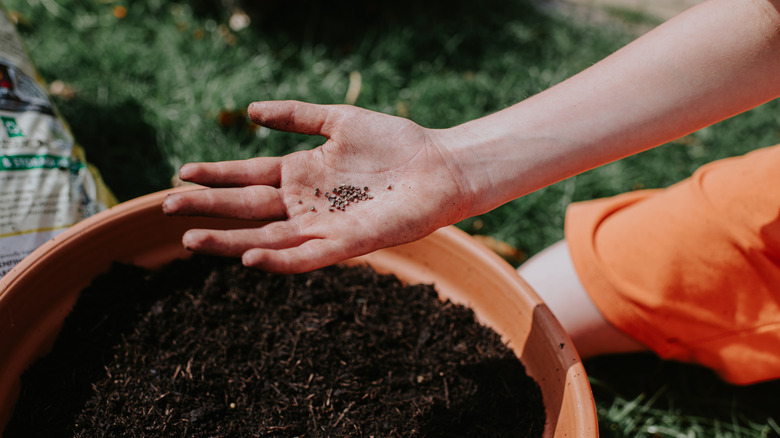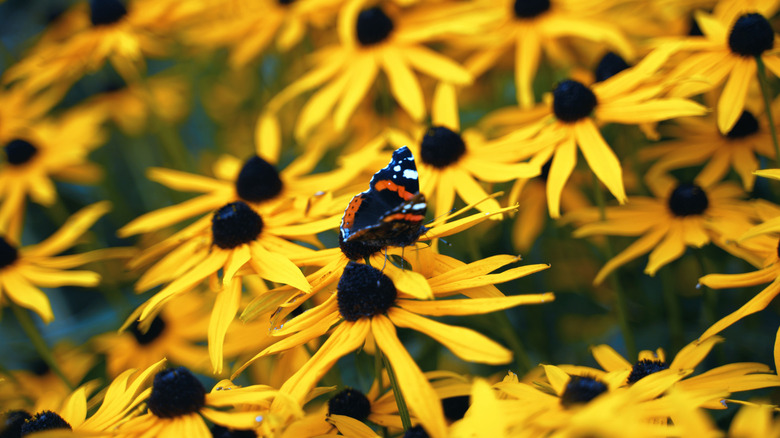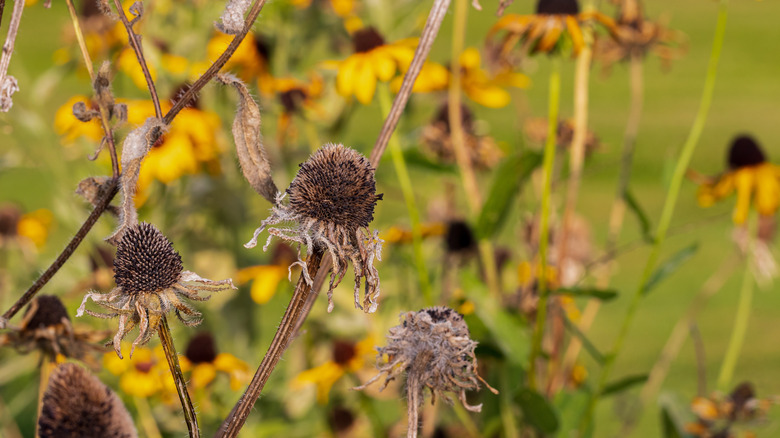The Vibrant Flower You Should Start From Seed In October For Spring Blooms
There are flowers that take a bit of a wait to get established, but once they take hold, you'll realize they were well worth the extra time. One of these is the black-eyed Susan (Rudbeckia hirta), a self-seeding native plant that nurtures pollinators with sunshine-colored blooms. A trick to jump-start good germination for this flowering plant involves sowing seeds in the middle of the fall, with the knowledge that you won't see the blooms immediately. Instead, the seeds will freeze and thaw, undergoing a process that triggers germination. Start black-eyed Susan flowers from seed in October, so the upcoming cold spells will help them emerge strong in the spring. You can do this by scattering the seeds on top of a soil mix, in containers, or directly in your garden.
It may seem counterintuitive to plant seeds when winter is around the corner, but you should still add it to your fall garden to-do list for plants like black-eyed Susan. Sowing their seeds in the fall actually provides something crucial to seed germination: a period of cold temperatures known as stratification. The cold temperatures of fall and winter snap the seeds out of a dormant period so they can awaken and burst forth when it gets warm again. You can even look forward to earlier spring blooms.
Naturally, this seeding method works best in cold climates. If you don't garden in a place where fall signals chilly weather, you can refrigerate store-bought seeds or seeds you're harvesting from your garden and replanting. For this method, leave seeds that are wrapped in a moist paper towel in a refrigerator for between one and three months.
Black-eyed Susans bring butterflies and color to the garden
If you sow black-eyed Susan seeds in the fall, you can await pollinator-attracting blooms that come back year after year, typically staring in May and continuing to bloom throughout the whole summer. And there are many good reasons to add them to your garden, whether you want to create a butterfly haven or a meadow aesthetic. The black inner part of the flower is actually made up of smaller nectar-containing flowers that feed butterflies, bees, and other pollinating insects. The silvery checkerspot butterfly, in particular, treats it as a host plant. And of course, they'll add a charming feel to your garden — their vibrant yellow petals contrast with their dark centers and with any greenery behind the flowers.
Another draw to these cheery wildflowers is their ability to self-seed, effortlessly filling your garden with color for years to come. All on their own, the 2- to 3-foot-tall plants can form large clumps that tolerate dry, hot conditions in USDA Hardiness Zones 4 through 9. The self-seeding generally starts after their first year of growth.
How to plant black-eyed Susan plants from seed
First, choose a spot to plant your black-eyed Susans in the fall, clearing out any weeds that are crowding the area or enriching your garden soil with compost before you sow. You can't go wrong planting the seeds in full sun, but if you don't have a very sunny garden, try the sweet black-eyed Susan (Rudbeckia subtomentosa), which can grow in partially shaded spaces. Another option is to plant the seeds in a container and move it into a sunny patch. When you know where you want them to grow, moisten a type of soil called a seedling mix, and spread it onto your garden dirt or into a container. Make furrows in the soil and drop the seeds into them, and finish with adding just a touch of compost over the seeds.
Once the seeds are planted, put that patience to work and wait to reap the benefits of planting them in the fall. Autumn seed-sowing may just become your new go-to for a variety of plants, like perennials and shrubs. It tends to result in more vigorous growth and a stronger root system to support the plant over time. Planting from seed in colder weather also eliminates the need for hardening off, an adjustment period that plants grown indoors and transplanted to the garden in the spring need. They'll be accustomed to the outdoor conditions as opposed to other seedlings, which have to be saved from transplant shock and need extra pampering and watering to ensure their success in the garden. In addition to saving water, you can also stretch your dollar, as planting from seed can be more cost effective than buying transplants from a nursery.


